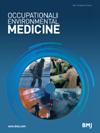Outbreak of lead poisoning from a civilian indoor firing range in the UK
IF 3.9
2区 医学
Q1 PUBLIC, ENVIRONMENTAL & OCCUPATIONAL HEALTH
引用次数: 0
Abstract
Introduction Lead exposure from discharged lead dust is a recognised risk at firing ranges. We report a lead poisoning outbreak among staff and their close contacts at a UK civilian indoor 24 m firing range. Methods A retrospective review was undertaken of data collected on all patients at risk of lead poisoning identified either by direct referral to the Clinical Toxicology clinicians at the West Midlands Poisons Unit, or via the Trace Elements Supra-Regional Assay Service Laboratory at Sandwell hospital. Results Eighty-seven patients were identified as having possible lead exposure, either at the firing range or via close contacts. Of these, 63 patients aged between 6 months and 78 years attended for blood lead concentration (BLC) testing. The highest BLC at presentation was 11.7 µmol/L (242 µg/dL). Only nine patients reported any symptoms at presentation. Fifteen patients received lead chelation therapy with oral dimercaptosuccinic acid (or succimer) 30 mg/kg/day or intravenous sodium calcium edetate (EDTA) 75 mg/kg/day, dependent on stock availability. Discussion This report highlights the need for vigilance of lead poisoning as an occupational hazard in the UK, including at recreational facilities such as indoor firing ranges. It emphasises the importance of regulation of lead exposure in the workplace, particularly given the vague symptoms of lead poisoning, and proposes re-appraisal of UK legislation. This report also highlights potential issues surrounding stock availability of rarely used antidotes for uncommon presentations in the event of an outbreak of poisoning. All data relevant to the study are included in the article or uploaded as supplementary information.英国民用室内射击场爆发铅中毒事件
导言:在射击场中,铅尘排放中的铅暴露是一种公认的风险。我们报告了英国一家民用室内 24 米靶场的工作人员及其密切接触者中爆发的铅中毒事件。方法 我们对通过直接转诊至西米德兰兹郡毒物科临床毒理学临床医生或通过桑德维尔医院微量元素超区域化验服务实验室确定的所有有铅中毒风险的患者的数据进行了回顾性审查。结果 有 87 名患者被确认可能在射击场或通过密切接触者接触过铅。其中,63 名年龄在 6 个月至 78 岁之间的患者接受了血铅浓度 (BLC) 检测。发病时的最高血铅浓度为 11.7 µmol/L(242 µg/dL)。只有九名患者在就诊时报告了任何症状。根据库存情况,15 名患者接受了口服二巯基丁二酸(或琥珀酰亚胺)30 毫克/千克/天或静脉注射乙二胺四乙酸钙钠(EDTA)75 毫克/千克/天的铅螯合治疗。讨论 本报告强调在英国需要警惕铅中毒这一职业危害,包括在室内射击场等娱乐设施中发生的铅中毒。报告强调了对工作场所铅暴露进行监管的重要性,特别是考虑到铅中毒的模糊症状,并建议重新评估英国立法。本报告还强调了在爆发中毒事件时,针对不常见症状的罕用解毒剂库存可用性的潜在问题。与该研究相关的所有数据均包含在文章中或作为补充信息上传。
本文章由计算机程序翻译,如有差异,请以英文原文为准。
求助全文
约1分钟内获得全文
求助全文
来源期刊

Occupational and Environmental Medicine
医学-公共卫生、环境卫生与职业卫生
CiteScore
8.30
自引率
2.00%
发文量
98
审稿时长
2 months
期刊介绍:
Occupational and Environmental Medicine is an international peer reviewed journal covering current developments in occupational and environmental health worldwide. Occupational and Environmental Medicine publishes high-quality research relating to the full range of chemical, physical, ergonomic, biological and psychosocial hazards in the workplace and to environmental contaminants and their health effects. The journal welcomes research aimed at improving the evidence-based practice of occupational and environmental research; including the development and application of novel biological and statistical techniques in addition to evaluation of interventions in controlling occupational and environmental risks.
 求助内容:
求助内容: 应助结果提醒方式:
应助结果提醒方式:


